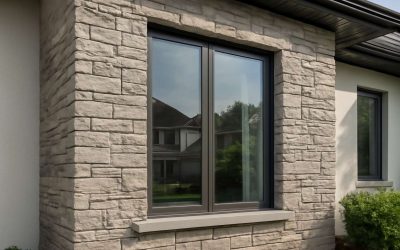Natural stone cladding is a popular choice for a range of different construction projects. The reason is simple – it looks great and offers a return on investment that’s hard to beat. It’s also an eco-friendly alternative that can be reclaimed at the end of its life cycle, making it a very sustainable choice.
There are many different kinds of natural stone available and each type has its own unique aesthetic. This means you can create a unique look for your home that will set it apart from the rest of the buildings in the area. Natural stone is highly adaptable and will suit all decorative styles, whether rustic, traditional or modern. It can be combined with other materials as well, such as wood and glass to create a truly original design for your home.
Stone cladding is made up of thin stone pieces that are fixed to a substrate using cement or other adhesives. They can be fixed directly to a wall or can be used as an over-cladding for other building elements such as balconies, columns or roofs. This is ideal for transforming an existing building or adding a new facade to a commercial or residential project. It’s also an effective method of protecting a structure from harsh weather conditions.
The durability of natural stone cladding is one of its main advantages over other types of material. While other cladding options such as vinyl or aluminium may begin to deteriorate over time, natural stone will retain its value and develop a beautiful patina that enhances the appearance of the building. This will also save on maintenance costs in the long run.
Unlike other cladding materials, natural stone is a completely green product and does not require any additional treatments to protect it from the weather. This makes it a cost-effective and environmentally friendly option for both new builds and renovations. It’s also very durable and easy to maintain, which will help reduce the overall operational costs of the building.
Before installing stone cladding it’s important to ensure all surfaces are clean, dry and free of any existing sealers or coatings. This will allow the adhesive to bond properly with the surface and ensure the longevity of the installation. Once the adhesive has been applied, it’s important to keep the stones firmly in place and to use plastic or wooden packers to maintain the gaps between the stones to ensure a consistent finish. It’s also a good idea to leave the surface undisturbed for 24 hours to allow it to cure properly.

0 Comments